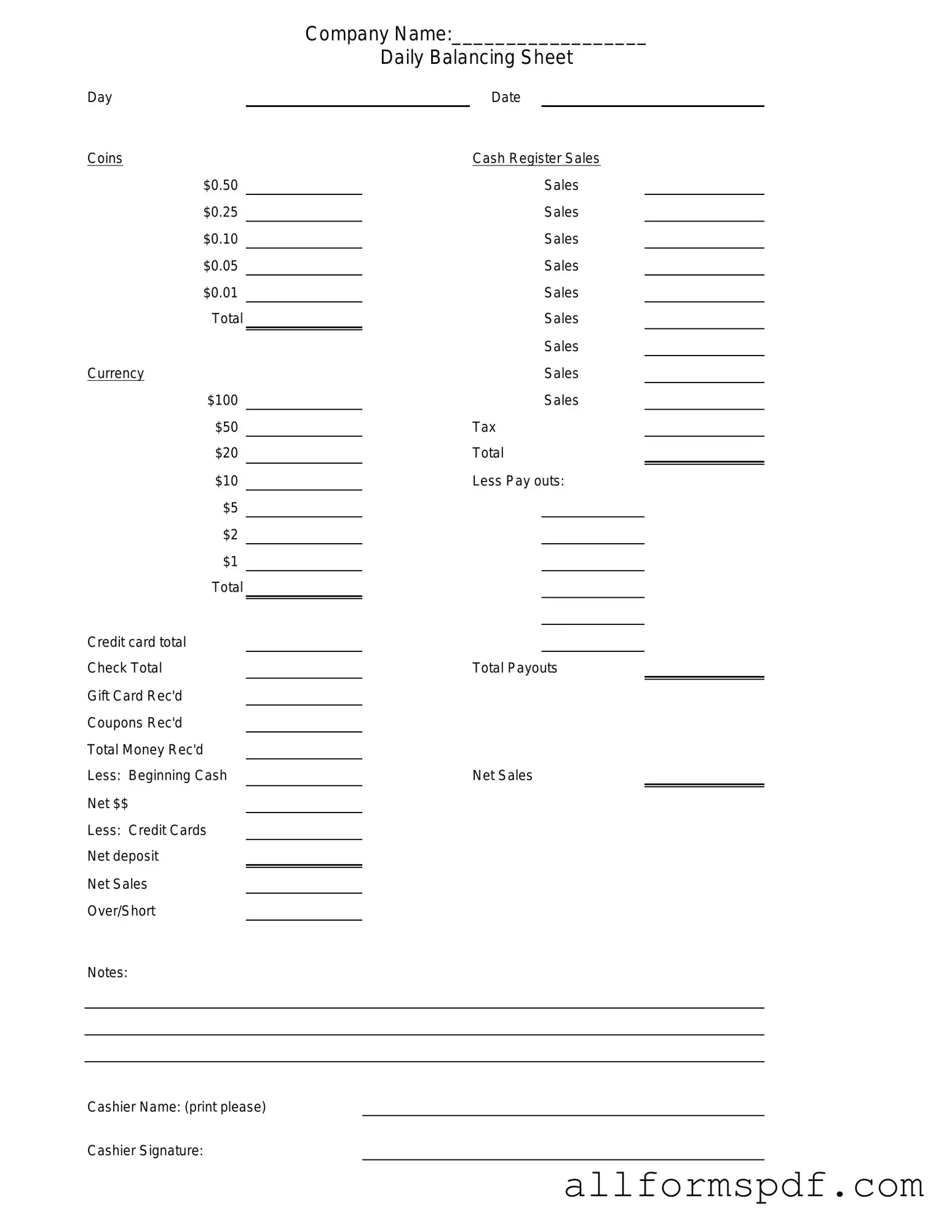Filling out the Cash Drawer Count Sheet form is an essential task for maintaining accurate financial records. However, many individuals make common mistakes that can lead to discrepancies and confusion. One frequent error is failing to double-check the starting cash balance. Before recording the cash amount, it is crucial to ensure that the initial figure is accurate. This simple oversight can set off a chain of errors throughout the entire form.
Another common mistake is not counting the cash properly. People sometimes rush through the counting process, which can result in missed bills or incorrect totals. Taking the time to count each denomination carefully can prevent future issues. It's also advisable to have a second person verify the count. This extra step can catch mistakes that might otherwise go unnoticed.
Inaccurate recording of cash totals is another issue that arises frequently. Individuals may write down the wrong amounts due to misreading their calculations or simply making a typographical error. It is essential to take a moment to review the numbers entered on the form. A quick glance can help ensure that the totals match the counted cash.
Additionally, people often forget to include all cash types, such as coins or checks. Focusing solely on bills can lead to an incomplete cash count. It’s important to remember that every dollar counts, regardless of its form. Including all cash types provides a complete picture of the drawer's contents.
Another mistake involves neglecting to record discrepancies. If the counted cash does not match the expected amount, it’s vital to document this difference on the form. Failing to do so can create confusion later on when reconciling accounts. Transparency about discrepancies can help identify patterns or issues that need addressing.
Some individuals also overlook the importance of signing and dating the Cash Drawer Count Sheet. This step serves as a verification of the count and provides accountability. Without a signature and date, the document may lack credibility and could lead to questions about its accuracy.
Lastly, not storing the completed form properly can lead to issues down the line. Once the Cash Drawer Count Sheet is filled out, it should be placed in a designated area for record-keeping. Keeping these documents organized ensures that they can be easily accessed for audits or reviews in the future.
